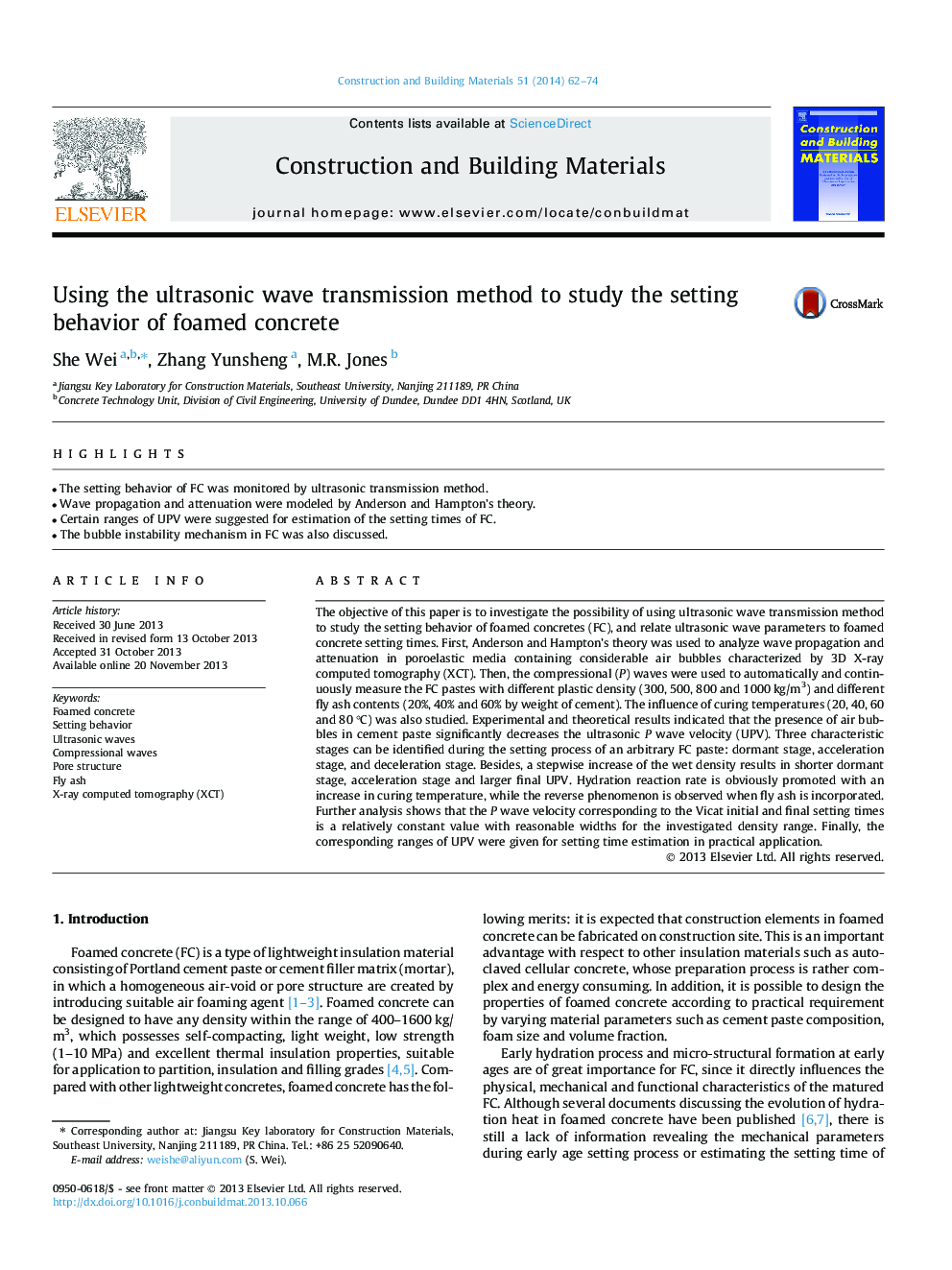| کد مقاله | کد نشریه | سال انتشار | مقاله انگلیسی | نسخه تمام متن |
|---|---|---|---|---|
| 257950 | 503604 | 2014 | 13 صفحه PDF | دانلود رایگان |
• The setting behavior of FC was monitored by ultrasonic transmission method.
• Wave propagation and attenuation were modeled by Anderson and Hampton’s theory.
• Certain ranges of UPV were suggested for estimation of the setting times of FC.
• The bubble instability mechanism in FC was also discussed.
The objective of this paper is to investigate the possibility of using ultrasonic wave transmission method to study the setting behavior of foamed concretes (FC), and relate ultrasonic wave parameters to foamed concrete setting times. First, Anderson and Hampton’s theory was used to analyze wave propagation and attenuation in poroelastic media containing considerable air bubbles characterized by 3D X-ray computed tomography (XCT). Then, the compressional (P) waves were used to automatically and continuously measure the FC pastes with different plastic density (300, 500, 800 and 1000 kg/m3) and different fly ash contents (20%, 40% and 60% by weight of cement). The influence of curing temperatures (20, 40, 60 and 80 °C) was also studied. Experimental and theoretical results indicated that the presence of air bubbles in cement paste significantly decreases the ultrasonic P wave velocity (UPV). Three characteristic stages can be identified during the setting process of an arbitrary FC paste: dormant stage, acceleration stage, and deceleration stage. Besides, a stepwise increase of the wet density results in shorter dormant stage, acceleration stage and larger final UPV. Hydration reaction rate is obviously promoted with an increase in curing temperature, while the reverse phenomenon is observed when fly ash is incorporated. Further analysis shows that the P wave velocity corresponding to the Vicat initial and final setting times is a relatively constant value with reasonable widths for the investigated density range. Finally, the corresponding ranges of UPV were given for setting time estimation in practical application.
Journal: Construction and Building Materials - Volume 51, 31 January 2014, Pages 62–74
